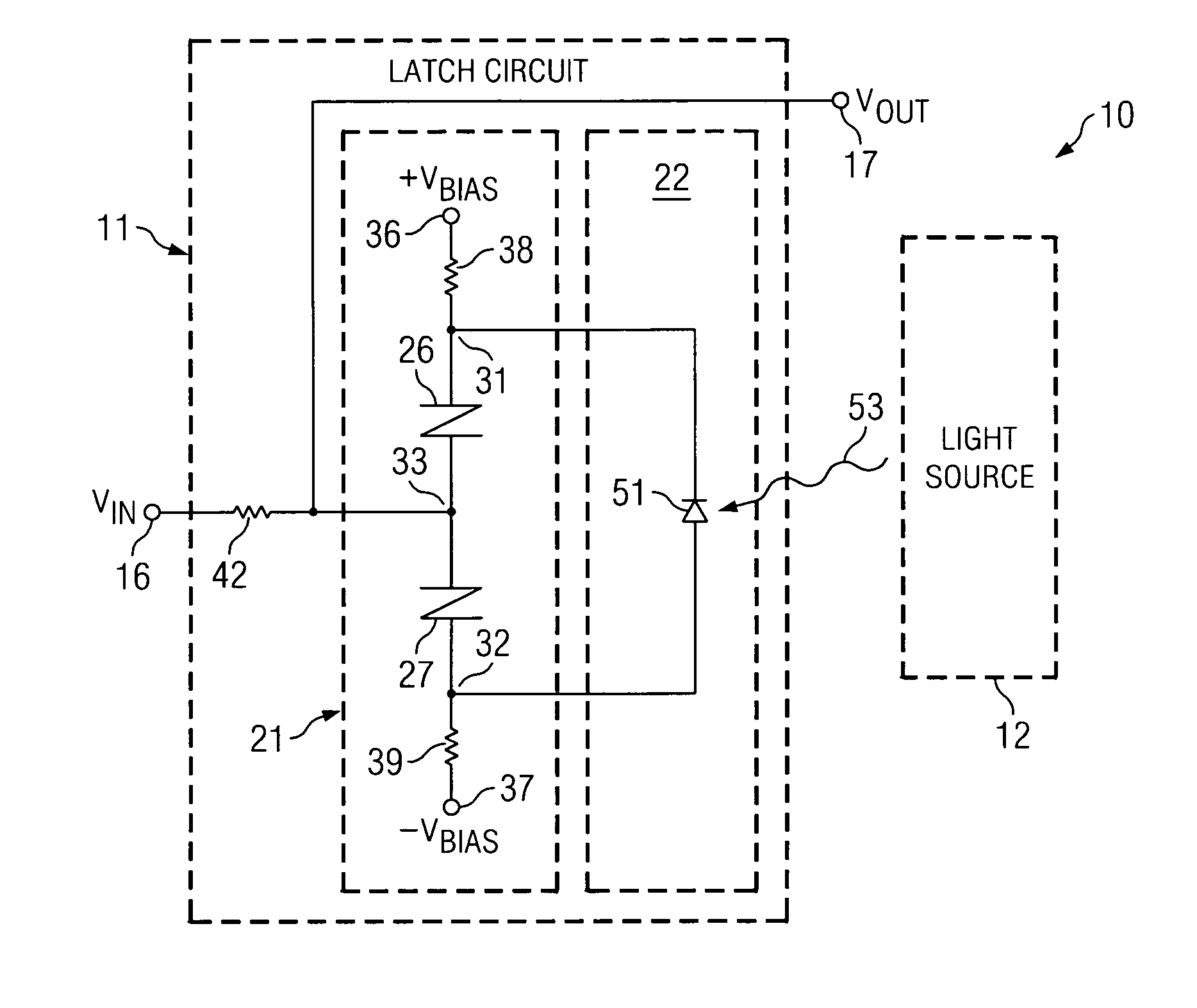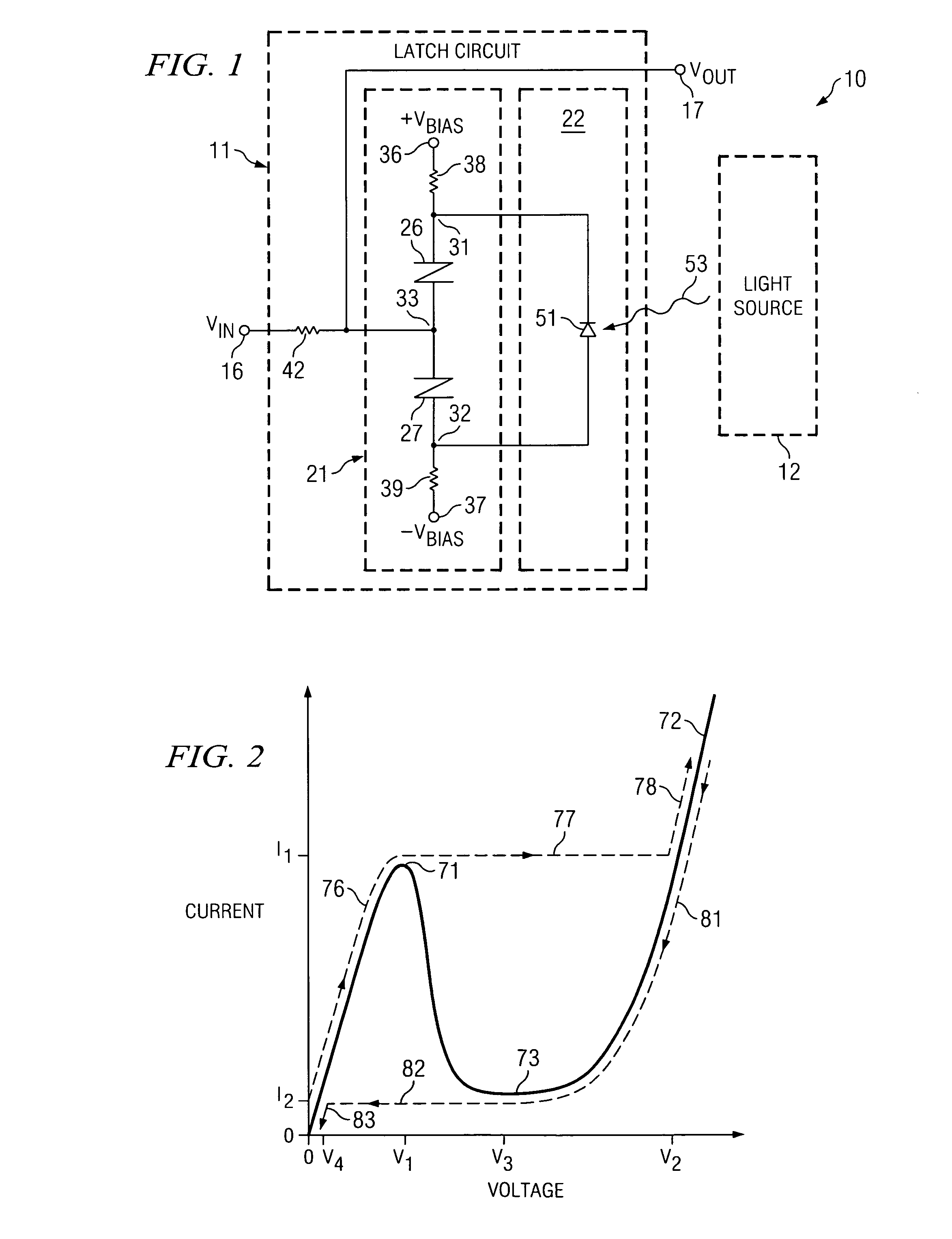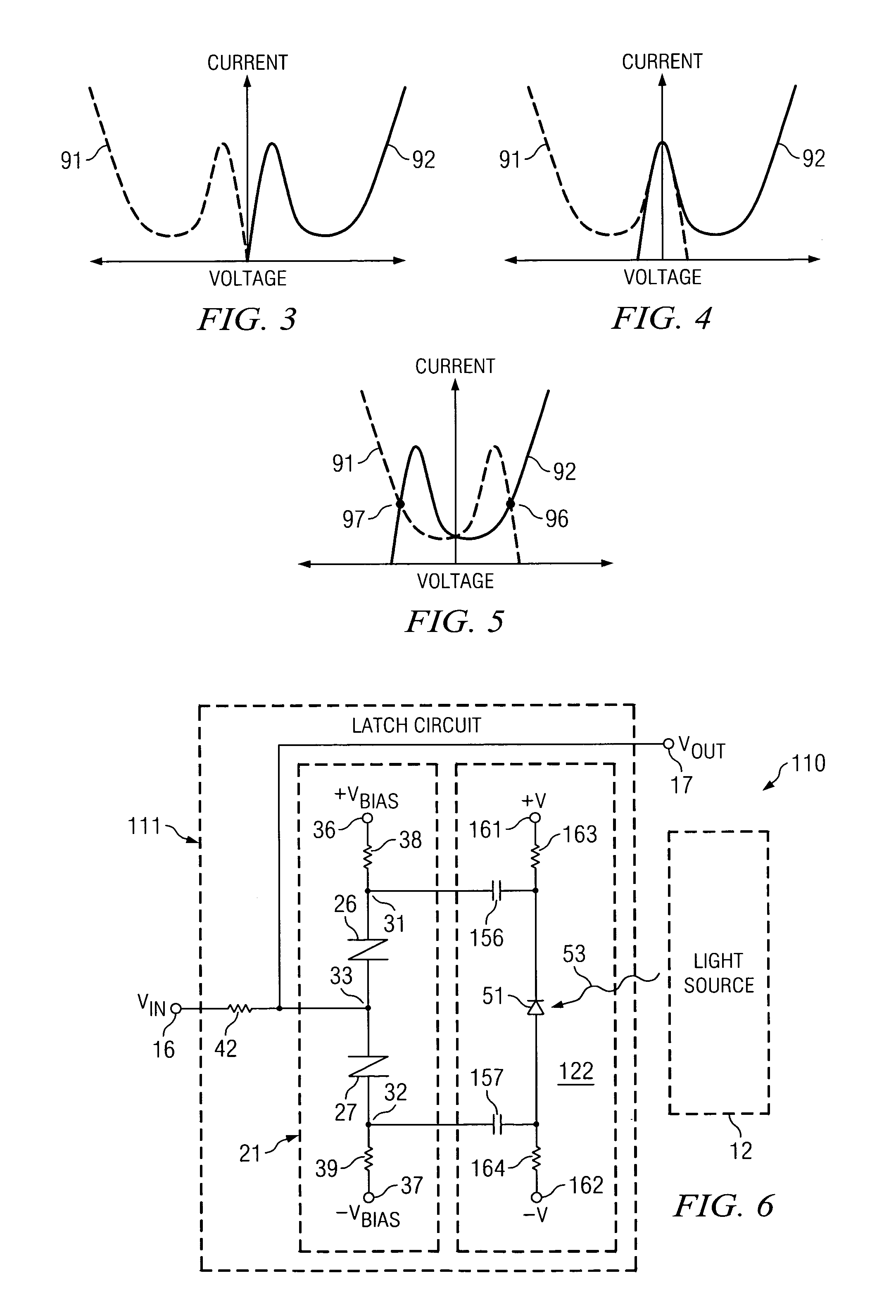Method and apparatus for resetting a high speed latch circuit
a high-speed latch and circuit technology, applied in pulse technique, optical radiation measurement, instruments, etc., can solve the problems of not being satisfactory in all respects, affecting the normal electrical balance of the latch, and effectively introducing the dynamic gate current of the
- Summary
- Abstract
- Description
- Claims
- Application Information
AI Technical Summary
Benefits of technology
Problems solved by technology
Method used
Image
Examples
Embodiment Construction
[0015]FIG. 1 is a schematic diagram of an apparatus 10 which includes a latch circuit 11 and a light source 12. The latch circuit 11 has an input terminal 16, to which an input voltage VIN is applied, and has an output terminal 17, at which the latch circuit 11 produces an output voltage VOUT.
[0016]The latch circuit 11 includes a latch portion 21, and a recess portion 22. The latch portion 21 includes two resonant tunneling diodes (RTDs) 26 and 27 of a known type, which are coupled in series between two nodes 31 and 32, with a further node 33 defined between the RTDs 26 and 27. The latch portion 21 has a bias terminal 36, to which is applied a positive direct current (DC) bias voltage +VBIAS. The latch portion 21 has a further bias terminal 37, to which is applied a negative DC bias voltage −VBIAS. The bias voltages applied to the bias terminals 36 and 37 are opposite in polarity, but equal in magnitude.
[0017]The latch portion 21 includes a resistor 38 which is coupled between the b...
PUM
 Login to View More
Login to View More Abstract
Description
Claims
Application Information
 Login to View More
Login to View More - R&D
- Intellectual Property
- Life Sciences
- Materials
- Tech Scout
- Unparalleled Data Quality
- Higher Quality Content
- 60% Fewer Hallucinations
Browse by: Latest US Patents, China's latest patents, Technical Efficacy Thesaurus, Application Domain, Technology Topic, Popular Technical Reports.
© 2025 PatSnap. All rights reserved.Legal|Privacy policy|Modern Slavery Act Transparency Statement|Sitemap|About US| Contact US: help@patsnap.com



